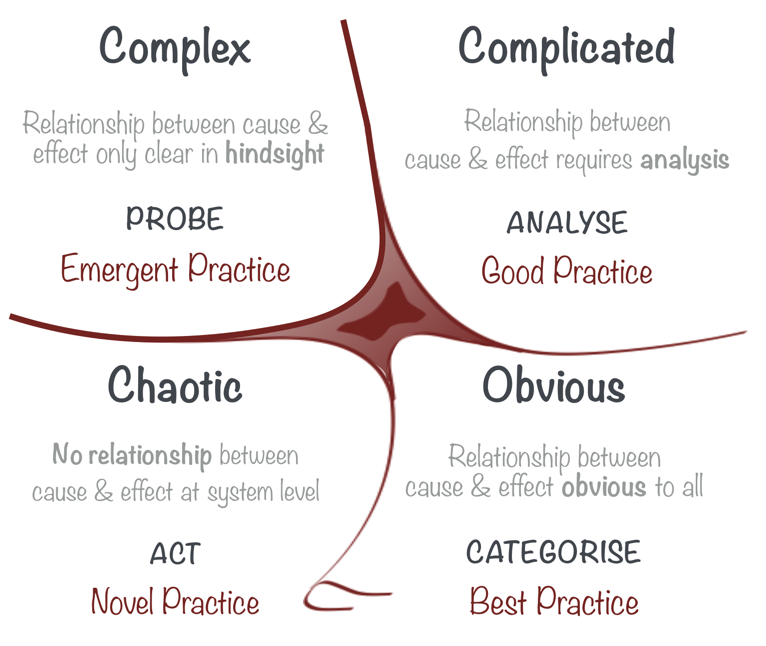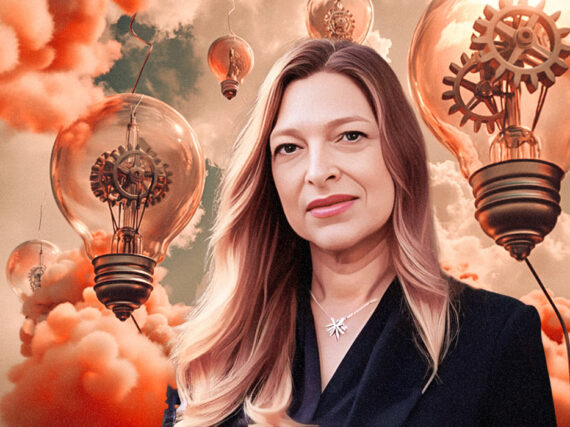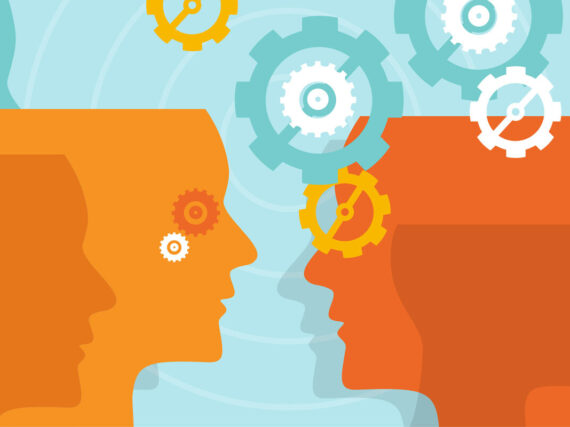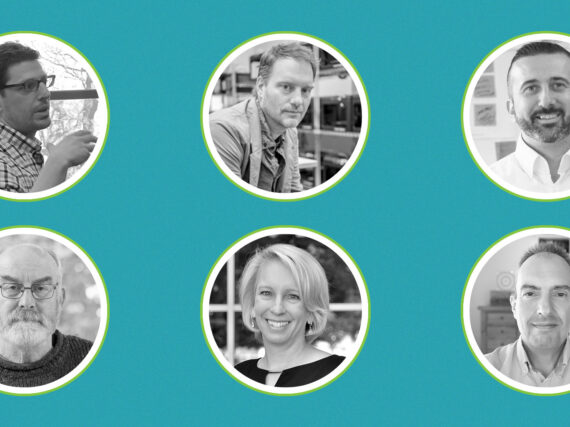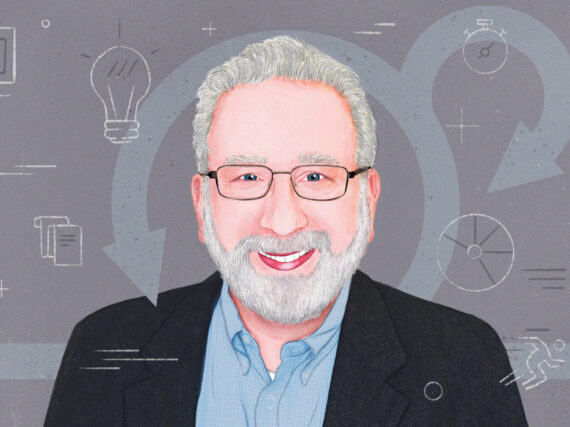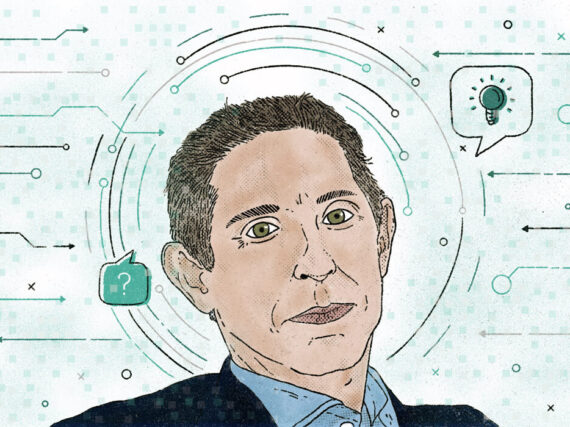As agencies consider returning to the office, many are gauging the right path to take. A recent Pew Research Center study found that more than half of those who can work at home (54%), would like to continue to do so, and about a quarter of workers are less satisfied with their job than they were before the pandemic.
While the way we do things has transformed over the past year and a half, it can be challenging to bring these new perspectives into play. This has led to uncertainty for organizations, making it difficult to simply go back to the way things were. At times like these, some tried-and-true Agile techniques can help to bring structure to the chaos.
For many years, we’ve found the Certified ScrumMaster (CSM) and Advanced CSM courses to be an excellent way to channel professional and organizational growth. Not only do the courses teach the frameworks, principles, and values of Scrum, they provide tools to help manage complex situations such as the ones born of current events.
In this post, we’ll look at some of the frameworks/models that can help ScrumMasters support their teams to navigate the paradigms, environments, mindsets, and beliefs that make up an organization. Much of the time, these tools recede into the background, but in challenging times, they can be helpful to revisit for inspiration and guidance.
What is a ScrumMaster?
First of all, what, exactly, is a ScrumMaster? It’s a question that even ScrumMasters might struggle to answer, since the role shifts to meet the needs of the organization, project, and team. As a servant leader and project facilitator, the ScrumMaster is often a jack of all trades but master of none. They measure success by the effectiveness and success of their team rather than their own objectives.
Though some skills may be more important than others in a given situation, ScrumMasters are trained in the five following areas:
- Practitioner: Understands Agile/Scrum principles, practices and values
- Teacher: Instructs others in Agile/Scrum skills
- Coach: Inspires personal and professional growth
- Mentor: Shares and fosters knowledge in others
- Facilitator: Neutrally guides teams in solutions and decisions
ScrumMasters also may possess mastery in the following:
- Technical expert: Jumps into technical work as needed
- Change catalyst: Encourages transformation in the organization
- Business master: Understands product needs and uses
On top of this, the following personality traits can make a difference in the success of a ScumMaster:
- Empathy and non-reactivity
- Ability to listen and learn
- Honesty with self and others
Takeaway: A ScrumMaster is a servant leader who not only knows how to keep a project on track in the face of complex and constantly changing situations, but encourages transformation and growth in both individuals and the organization as a whole.
How can Scrum techniques make a difference?
On our teams, there may not be one official ScrumMaster, but multiple team members with certifications who can keep Scrum principles in mind. A designated ScrumMaster, however, is available specifically to listen to the needs of the team or organization and offer perspective and coaching as appropriate. They might use the following techniques to gain a better understanding of the best approach for each situation.
Laloux Culture Model
The value of an Agile transformation from a hierarchical business model to one based on self-organizing teams can be easier to understand when placed in the context of history and the world at large. The Laloux Culture Model, introduced in Frederic Laloux’s book, Reinventing Organizations, defines the paradigms used by human organizations through history that are mirrored by the evolution organizations take on a path from Red to Teal.
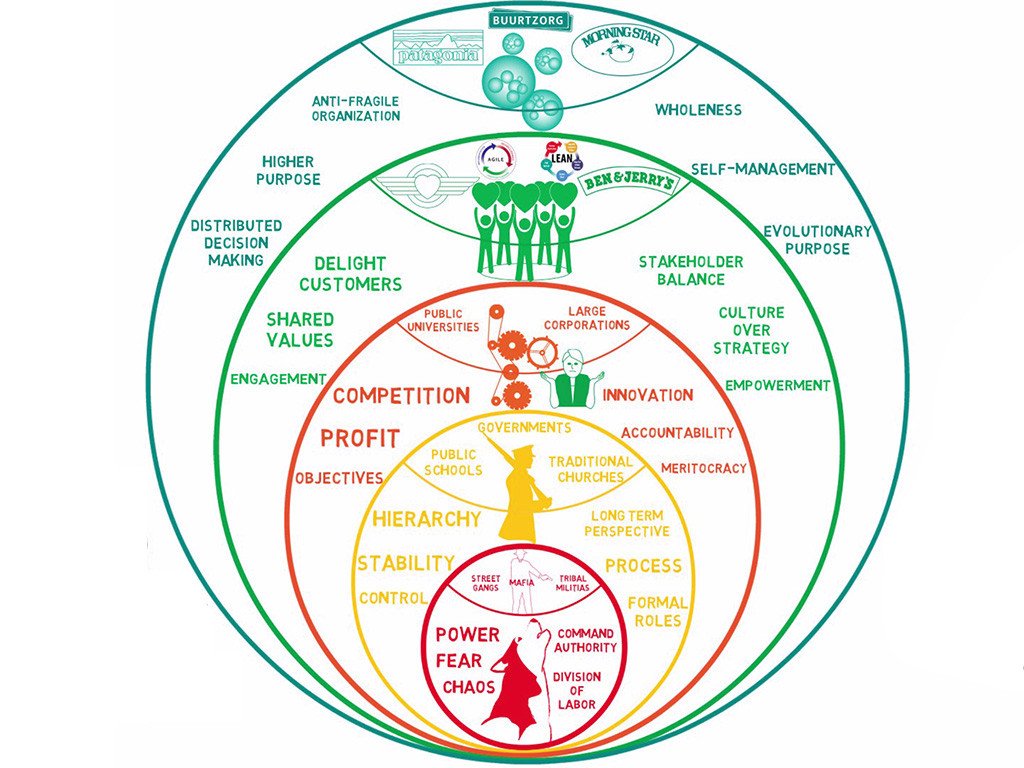
- Red: An impulsive tribal mentality or “wolf pack” with chieftains where dissension is not tolerated and long-term strategies are minimal, eg: mafia, militias
- Amber: Conformist organizations where status is indicated in uniforms and long-term objectives are defined, eg: military, churches
- Orange: Achievement-based meritocracies with clear boundaries and expectations to work hard and produce profit, eg: universities, corporations
- Green: Pluralistic self-organizing teams where servant leaders empower staff to provide improved customer experience and develop creative solutions to difficult problems, eg: Agile companies, Southwest Airlines, Ben & Jerry’s
- Teal: Evolutionary self-organizing and self-managing networks of people that take accountability for their own actions, eg: anti-fragile organizations, Patagonia, Spotify
While many digital-first organizations find themselves somewhere between Orange and Green, government agencies may still be in Amber, and Teal may be an unrealistic concept for most. Agile and Scrum provide useful tools for companies looking to migrate from Orange to Green, from a hierarchal, profit-based motive to a self-organizing service-based model.
Takeaway: Understanding where an organization lies in the Laloux model pinpoints where it is at in the transformation process and what steps are needed to move forward.
Cynefin Framework
Being able to distinguish between the different types of environments encountered in the workplace gives insight into the best course of action. The Cynefin Framework, (a Welsh word meaning habitat, pronounced kenevin) developed by Dave Snowden, provides a useful breakdown of the kinds of habitats that might be encountered in organizations and projects.
- Obvious/Simple: Known knowns, relationship between cause and effect is clear
- Complicated: Known unknowns, relationship between cause and effect requires analysis
- Complex: Unknown unknowns, cause and effect only understood in retrospect
- Chaotic: Cause and effect are unclear
- Disorder: No clarity
Once a ScrumMaster identifies the kind of habitat they are dealing with, certain strategies can be applied. For instance, in a low stress obvious or complicated environment, there’s time to come up with best practices before acting. However, in a chaotic or disorderly environment where things are moving fast and furious, it’s usually better to act first and form a plan later.
When dealing with a complex environment, with moving parts that all interact with each other to produce an unpredictable array of outcomes, it’s best to work in the small increments of Scrum cycles that allow you to try, test, and adapt based on feedback to determine best results. See How to Navigate Complicated and Complex Systems for more on this topic.
Takeaway: Giving teams permission to try and fail in complex situations allows for successive cycles to improve results based on input and feedback. This can also be useful in determining the right course of action for return to office. Try, test, adapt, repeat.
The Four Lenses
Another framework for assessing the habits of an organization or team is called the Four Lenses, as discussed in a blog by Miljan Bajic. When we look at any organization of people, it helps to take into account these four different yet congruent quadrants. While the mindset of the individual and culture of the organization may be invisible, the actions of the individual and systems of the organization are evident for all to see.
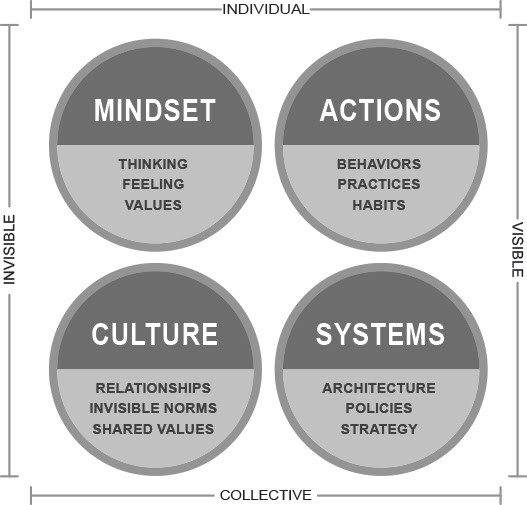
- Mindset Lens: Thoughts, feelings, and values of each member of a team or organization influence actions in ways that we cannot always see on the surface
- Culture Lens: Relationships, invisible norms, and shared values of an organization make up the team’s culture
- Actions Lens: Outward behaviors, practices, and habits of an individual are a reflection of an individual’s mindset
- Systems Lens: An organization’s architecture, policies, and strategy are ultimately constructed from the mindset, culture, and actions of its members
The mindset of the people in the organization create the culture and from that comes the actions and systems. Since all of the four quadrants make up the structure of how the organization operates, all four must be considered to optimize results.
Takeaway: When change is needed, Scrum practices, such as standups and retros, can help organizations to align through actions and systems that can slowly change the mindset and culture.
Johari Window Model
Self awareness is important not only for ScrumMasters, but for the whole team. The Johari Window Model, created by Joseph Luft and Harrington Ingham, is a tool that can be used to better understand oneself and the mindset of individuals on a team, in order to better understand actions and culture. Based on four perspectives, it provides clarity on attitudes and beliefs that may otherwise be unknown.
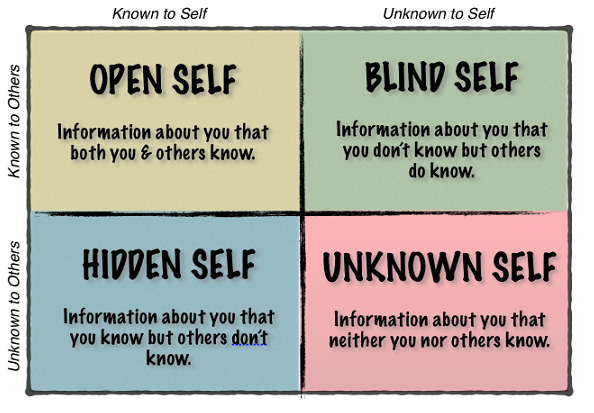
- Open Self: Traits that both the subject and peers perceive
- Blind Self: What others perceive that the subject does not
- Hidden Self: Things peers are unaware of, or that only the subject believes to be true
- Unknown Self: The subject’s behaviors or motives that no one recognizes
Takeaway: A better understanding of the hidden and unknown biases carried by team members can help to clarify the roadblocks that individual mindsets pose to a change in culture and action. On the topic of returning to the office, most people have pretty strong opinions based on a number of issues. Understanding the foundation of these opinions and beliefs can help staff to feel validated and supported and more willing to try new options.
GROW Model
Last but not least, a ScrumMaster’s objective to optimize a team or organization is ultimately achieved through coaching and mentoring. Tools such as the GROW model, created by Sir John Whitmore, provide a framework to assist in this effort. A ScrumMaster can be much more effective in coaching an organization with an understanding of the paradigms, environments, lenses, and selves identified in the frameworks/models above. The next step is to source a combined goal and begin coaching the organization and individuals in that direction.
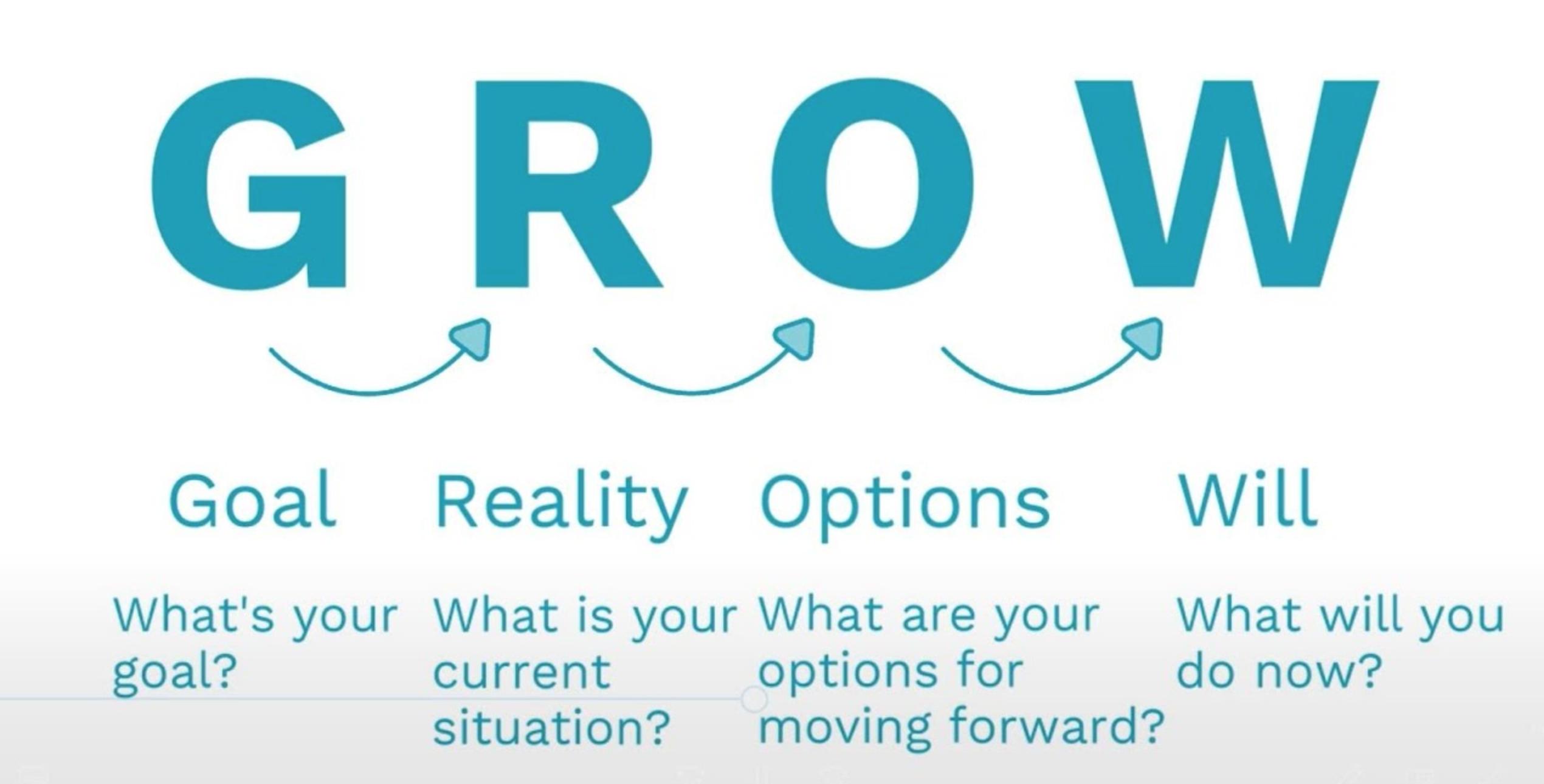
- Goal: Identify an inspirational goal to drive success and keep energy and motivation high
- Reality: Discuss the current situation and what barriers currently exist between now and achievement of the goal, and ask questions to help the individual or team find their strengths
- Options (or Obstacles): Explore the options or obstacles to moving forward with imaginative questions that inspire the individual or team to have a breakthrough insight
- Wrap-up (or Way forward): Agree to specific actions, timeframe and set accountability and reporting; revisit the earlier steps if commitment is lower than 8 out of 10
Takeaway: Change is hard. Especially in complex situations that feel out of our control. When a ScrumMaster can listen and learn as much as possible about the unseen paradigms, environments, biases, and beliefs that block change, they can be brought into the light and addressed with a common goal.
In summary
To bring it all around, in the case of determining the best way to return to office, a ScrumMaster might begin by speaking with team members to understand their needs and wishes and refer to the Four Lenses or Johari Window Model to get a sense of the mindsets and beliefs beneath the surface. To add to the understanding of the situation, they might consider the current Cynefin environment, is it obvious, chaotic, or complex? They might also take a pulse on the Laloux paradigm of the company, is it Amber, Orange, or Green, and are leaders and employees happy with the current status, or do they want to take this opportunity to evolve to another level?
Finally, with all of this information in hand, a ScrumMaster can use the GROW model to establish a common goal for how the organization will return to the office. Then the most applicable options can be implemented, tested, and adjusted to best meet the needs of the organization and its members. While the process of change management is often difficult, the reward is the ability to move forward with clarity and purpose. And as the case may be, the hardest struggles can bring the most valuable breakthroughs.
Learn more
- Contact us for support in transforming your organization
- Agile to Agility Highlights With Miljan Bajic and Mike Cohn: How Covid has transformed Agile consulting and Scrum certification classes
- Making Sense of Digital Transformation: What does it mean? And how does it work for the public sector?
- Goal Setting Techniques That Actually Work: How to create high quality goals to transform you and your organization

